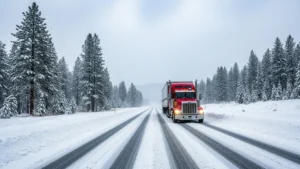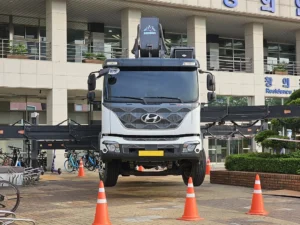Performing this check before starting your travels will not only ensure your safety, but will also allow you to comply with the regulations
In a profession where road safety is a fundamental priority, it is common for drivers to neglect their own safety. By managing their schedules based on miles and having limited rest breaks, they often skip essential activities like daily truck inspections, as these tasks may seem like a waste of time during their rest periods.
Although modern trucks are extremely durable, daily inspection of the same components remains crucial in road transport. Any part of a truck, even a new one, can fail at any time. While a thorough pre-trip inspection does not guarantee that a breakdown won’t occur, identifying issues in advance can prevent a major catastrophe during trips.
That’s why we are sharing a routine that will take no more than 10 minutes and will help you prevent accidents. Performing this check before starting your trips will not only ensure your safety but also help you meet requirements in case you are subject to a roadside inspection.
1. Tire inspection
Tires are among the most exposed parts to damage due to road debris, potholes, heat, and manufacturing defects. Drivers often do not perform proper tire inspections, limiting themselves to a superficial check. The gaps between tandem tires and the sidewalls of the inner tire are usually difficult to examine due to side fairings and tractor fenders, but it is crucial to pay attention to these areas.

2. Air supply
With many modern trucks equipped with airbags instead of springs, the air supply system is crucial, requiring regular inspection of lines, valves, and mounting brackets. Aging air compressors can introduce oil vapor into the lines, which, when combined with dust and cold, forms sludge that can clog the valves. Therefore, it is essential to maintain and inspect air dryers and regularly purge the tanks to avoid problems.

3. Fluid inspection
It is crucial to perform a thorough inspection before each trip, checking and replenishing fluid levels as needed. Additionally, inspect the engine for oil, fuel, or coolant leaks before they form puddles on the ground. Small leaks detected early can prevent more significant issues in the future.

4. Check nuts, bolts, and lighting
Nuts and bolts are essential for keeping truck parts together, especially the fifth wheel, which supports the trailer’s weight and endures significant lateral and longitudinal stresses. These components can loosen or break, often going unnoticed without proper inspection. Rust on nuts or bolts is a sign of potential loosening, although chrome covers can hide rust. It is also crucial to inspect lights and wiring daily.

Additional step: maintain routine and maintenance
To ensure a safe journey, perform a systematic pre-trip inspection, always starting from the same point, such as the driver’s door. Use checklists available online or in the CDL manual, as well as inspection standards from the Commercial Vehicle Safety Alliance. During the trip, conduct periodic checks at rest areas to identify issues in time and avoid superficial inspections that might overlook critical faults. Finally, if you find a problem, act responsibly by repairing what is necessary or consulting an expert to handle the work.


Truck drivers are at high risk of developing diabetes
About 11% of the adult population meets the criteria for prediabetes, and there is a particular group at high risk: truck drivers. Diabetes rates in

Starting in trucking: required permits, registrations, and compliance
Are you a new carrier? This is what you need to know about permits, registration, and compliance. The trucking industry can be quite challenging for

Alberta Clipper Brings an Early Polar Blast: A Critical Alert for Drivers
The Alberta Clipper is sweeping across the country with fast-moving Arctic air, sharp temperature drops, and dangerous road conditions that demand heightened attention from all professional drivers.

American manufacturers trigger truck “dumping” investigation
Foreign trailer manufacturers under investigation for alleged “dumping” in the U.S. The U.S. truck market is at the center of a trade dispute. After domestic

ATRI Warns: Litigation Is Rising Across the U.S. Trucking Industry
A new report from the American Transportation Research Institute (ATRI) reveals how escalating litigation, higher legal costs, and mounting insurance pressures are reshaping the U.S. trucking industry. The findings mark a critical moment for motor carriers, insurers, and logistics stakeholders who must understand the changing legal environment — and the increasingly strategic role of strong insurance partnerships.

FMCSA says no to hours-of-service exemptions
FMCSA rejects two requests for exemptions to hours-of-service rules for commercial drivers. The Federal Motor Carrier Safety Administration (FMCSA) has denied two exemption requests related
